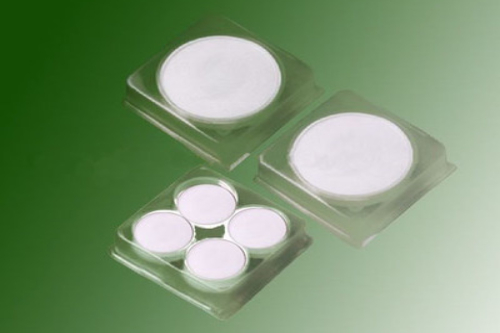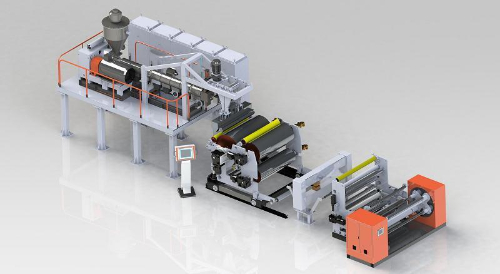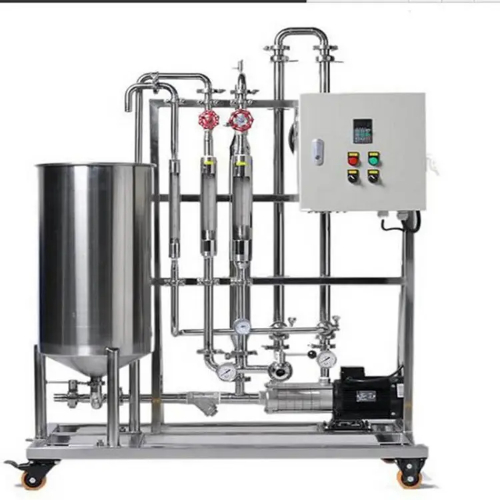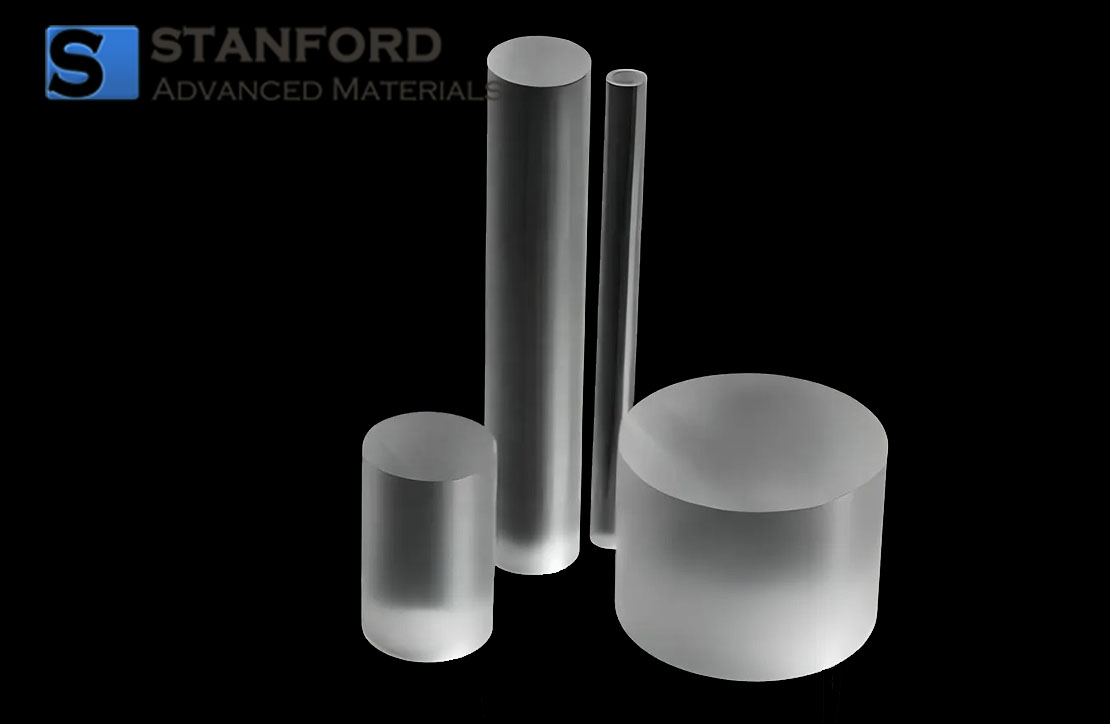Navigating the World of Membrane Filters: Types, Uses, and Benefits (Ⅰ)
Introduction
Membrane filtration technology is a physical method that uses thin or porous membranes to separate, filter, and purify tiny particles from liquids or gases. These membrane, typically made from synthetic materials (e.g., polyester, polyamide, polycarbonate, etc.) block solid particles, microorganisms, solutes, or solvents, , effectively purifying the fluid. Depending on the desired filtration objective, they can have pore sizes ranging from the nanometer to the micron scale. Different from the traditional separation technology such as precipitation, adsorption, ion exchange, etc., membrane filtration technology is easy to operate, has high filtration efficiency and filtration precision, and low energy consumption. From the types of materials used to make filtration membranes, this article introduces the properties, preparation process, and application scope of different types of membrane filters to provide you with a reference for your choice.
2 What Are Membrane Filters
Membrane filters are commonly used in laboratories, industrial production, water treatment, food processing, pharmaceuticals, and various other fields to separate, purify, and purify liquids or gases. Theys filter fluids by using membranes with specific pore sizes or specifications to separate particles of a particular size or type.
Membrane filters work based on the size exclusion effect, where particles are selectively blocked based on their size and the size of the membrane pores. Thus, they can be divided into different types based on their membrane pore sizes. For example, microporous membranes filter out most microorganisms, bacteria, and macromolecular solutes, while ultrafiltration membranes filter out larger particles such as proteins and colloids.
Membrane filters can also be divided according to the type of material used to make the membrane。 The more widely used ones are generally composed of polymers (represented by polyethersulfone (PES), polyvinylidene fluoride (PVDF), etc.), ceramics (represented by zirconium oxide and alumina-based ceramics, etc.), nano-structures (represented by titanium dioxide nanotubes, graphene oxide (GO), and carbon nanotubes (CNT)) and metal-organic frameworks (MOFs), etc. These filtration membranes have different properties and are widely used in different fields of production life and research.
Due to space limitations, this article will focus in detail on polymeric and ceramic membranes. For more comprehensive insights, follow our website for a subsequent Part II article that will explore the advanced applications and characteristics of nano-structured membranes and metal-organic frameworks.

Fig. 1 Membrane Filters for Water Purification
3 Polymeric Membranes
3.1 Polyethersulfone (PES)
3.1.1 Introduction of Polyethersulfone
Polyethersulfone (PES) is an important engineering plastic with many excellent chemical and physical properties. Its chemical structure is mainly composed of repeating phenylidene ether units, forming a linear or branched polymer structure. The presence of benzene rings and ether bonds gives polyethersulfone good thermal stability and mechanical strength. Polyethersulfone also contains sulfate groups which enhance the heat resistance and chemical stability of the polymer. Its glass transition temperature can reach 225 ℃ and can be used at 180 ℃ for a long time. PES materials also have good oxidation resistance, corrosion resistance, flame retardant, blood compatibility, and excellent overall performance.
3.1.2 How to Produce Polyethersulfone
1. Phase Conversion Method: The phase conversion method is simple, low-cost, easy to operate, and widely used, and is one of the most common methods in membrane preparation technology. The process of membrane formation is to formulate a good homogeneous polymer solution with a certain composition, through certain physical methods to make the solution in the surrounding environment for solvent and non-solvent mass transfer and exchange, change the thermodynamic state of the solution, so that it is separated from the homogeneous polymer solution, transformed into a three-dimensional macromolecular network gel structure, and ultimately cured into a membrane. The film formation method can be divided into non-solvent-induced phase separation methods, also known as wet (NIPS), thermally induced phase separation (TIPS), and vapor-induced phase separation (VIPS).
2. Electrostatic Spinning Method: The fiber membrane prepared by electrostatic spinning technology has a large specific surface area, high porosity, good connectivity, small fiber diameter, and controllable thickness of the membrane, etc. The principle is that the configured spinning liquid is placed in a high-voltage electric field, and under the action of the high-voltage electric field, the capillary Taylor cone droplets are accelerated to overcome the surface tension to form a jet of fine streams. In the process of jetting, the solvent in the stream evaporates, solidifies, and then falls on the receiving device to form a fiber film similar to a nonwoven fabric. Compared with the phase conversion method, the electrostatic spinning film production process is simpler, easier to operate, relatively higher production efficiency, and its adjustability is stronger, and better able to meet the needs of different application scenarios.
3. Coating Method: Different from the previous two methods, the coating method coats the base film (e.g. PSF, PES film) with a separation layer that mainly plays a role in separating the composite film to obtain a composite film with better performance. The coating method is a simple process, but in the preparation process, it is necessary to consider the uniformity and firmness of the coating to ensure that the performance of the filter membrane has stability and reliability in the process of use.
3.1.3 How Is Polyethersulfone Used
1. Biomedical Field: PES material has good biocompatibility and is a biomedical material with great development potential, currently PES membrane can be used for the preparation of blood purification materials, wound dressings, and biological scaffolds in the field of biomedical applications, etc. PES membrane is commonly used in the preparation of hemodialysis membranes, which is excellent in antifouling, antibacterial, anticoagulant, and biocompatible.
2. Water Treatment: PES membranes are widely used in the field of water treatment for the preparation of pure water, oil-water separation, seawater desalination, and various types of wastewater treatment. For example, polydopamine (PDA) and polyethyleneimine (PEI) loaded with isolated iron species (4A-Fe) catalyst particles can be used for water treatment.
(PDA) and polyethyleneimine (PEI) loaded with isolated iron species (4A-Fe) catalyst particles can be deposited on the surface of the PES membrane to separate non-emulsified oil-water mixtures effectively, and the separation efficiency can be
The separation efficiency can reach 99.8%, and can simultaneously degrade the phenol pollutants in wastewater. 3.
3. Battery Field: Due to the excellent mechanical properties and heat resistance of PES membrane, the use of PES membrane as a battery separator can be used in lithium-ion batteries, methanol fuel cells microbial fuel cells, etc. The PES membrane can be used in the production of lithium-ion batteries, methanol fuel cells, and microbial fuel cells. Before electrostatic spinning, PES is added to the polyvinylidene fluoride (PVDF) spinning solution to prepare a more heat-resistant PES/PVDF composite fiber membrane for the lithium-ion battery diaphragm, the composite membrane also has a high ionic conductivity of 1.69 × 10-3 S/cm.

Fig. 2 Polyethersulfone Membrane Folded Cartridge
3.2 Polyvinylidene Fluoride (PVDF)
3.2.1 Understanding Polyvinylidene Fluoride (PVDF)
Polyvinylidene Fluoride (PVDF) is an important synthetic polymer, which is made by polymerizing vinylidene fluoride (VDF) monomer. PVDF is a transparent, colorless thermoplastic with many excellent properties, so it is widely used in many fields.
Excellent chemical resistance: It can withstand acid, alkali, organic solvents, and other chemicals, and has good heat resistance, can maintain stability at higher temperatures, usually able to withstand high temperatures up to about 150 ° C.
Good weather resistance: PVDF can be used in outdoor environments for a long period without ultraviolet rays, oxidation and moisture and other factors.
High transparency: PVDF is transparent, colorless, and thermoplastic. It can transmit visible light and ultraviolet light,
Biocompatibility: Similar to PES, PVDF is also biocompatible and is commonly used in the medical field.

Fig. 3 Polyvinylidene Fluoride Membrane Filters
3.2.2 Synthesis Methods for Polyvinylidene Fluoride (PVDF)
1. Dry Polymerization: One method of dry polymerization is through gas phase polymerization. In this method, Vinylidene Fluoride (VDF) gas reacts with a catalyst to produce a PVDF polymer. Typical catalysts include iron fluoride, ferric chloride, etc. The advantage of this method is that no solvent is used in the reaction process, which reduces the solvent removal step in subsequent processing steps. Upon completion of the polymerization reaction, heat treatment of the product is typically required to ensure complete crystallization of the polymer and removal of residual catalyst. The heat treatment process may include steps such as heating, cooling, and crystallization processing. The polymer product is then further processed by extrusion or calendering to prepare PVDF film.
2. Wet Polymerization: Vinylidene Fluoride (VDF) monomer is dissolved in a suitable solvent. Usually used solvents include hydrogen fluoride, trichloroethylene, methylene chloride, and so on. In solution, the monomer molecules undergo free radical or anionic polymerization. An initiator (e.g., a peroxide-based compound) is added to the solution to initiate the polymerization reaction of the monomer. The initiator generates free radicals under the right conditions and promotes the formation of chemical bonds between the monomer molecules, leading to the gradual formation of polymer chains. Under the action of the initiator, the monomer molecules are gradually polymerized into polyvinylidene fluoride polymers. The reaction is usually carried out at a certain temperature and pressure to ensure polymer formation and molecular weight control. After the polymer is formed, the solvent is removed from the solution. This is usually done by evaporating the solvent or by removing the solvent by placing the solution under a vacuum. After the solvent is removed, the PVDF polymer is obtained as a solid substance, which is then processed into a film.

Fig. 4 PVDF Membrane Filters Production Line Schematic
3.2.3 Polyvinylidene Fluoride (PVDF) in Applications
1. Microbial Removal: The microporous structure of PVDF filter membranes can effectively filter microorganisms and bacteria, and is used in applications such as drinking water treatment, and microbial removal in the production of food and beverages. The size and distribution of the micropores can be adjusted by precisely controlling the process parameters and by adding the appropriate porosity agents in the preparation of PVDF filter membranes. This allows PVDF filter membranes to have a more uniform and controllable microporous structure.PVDF filter membranes usually have a nanometer to micron size range. This allows PVDF filter membranes to have a more uniform and controllable microporous structure. The micropores of PVDF filter membranes are usually in the nanometer to micrometer size range. This size range effectively blocks most microorganisms and bacteria, including bacteria, viruses, parasite eggs, etc., thus realizing effective filtration and removal of microorganisms from water. It is suitable for drinking water treatment, and food and beverage production processes that require strict control of microorganisms.
2. Separation and Purification of Chemicals: PVDF filtration membranes are also widely used in the chemical industry for the separation and purification of chemicals.PVDF filtration membranes have excellent chemical and solvent resistance and can be used for the recovery and reuse of organic solvents. By filtering the reaction liquid through the PVDF filtration membrane, the solvent and reaction products can be effectively separated, thus realizing the recovery and recycling of organic solvents and reducing the cost and waste of resources.
Since PVDF filtration membrane has a microporous structure, it can effectively block large molecules and solid particles, while allowing small molecules of solutes to pass through. Therefore, it can be used for the purification of chemicals, such as the removal of impurities from solvents and the separation of chemicals. Through the filtration effect of the PVDF filtration membrane, the impurities and solid particles in the raw material solution can be removed, and pure chemical products can be obtained.
In addition, in the process of chemical synthesis, it is often necessary to separate and purify the reaction liquid to obtain the target product.PVDF filtration membranes can be used to separate solid particles, precipitates, or suspensions in the reaction liquid to make the solution clearer and more transparent. This is important for subsequent purification steps or downstream processes.
3. Electronics Industry: PVDF filtration membranes are also commonly used in the electronics industry, such as particle removal in the manufacturing process of electronic devices, and photoresist filtration. In the manufacturing process of electronic devices, especially in the semiconductor industry, the control of particles is very important, PVDF filtration membrane has a microporous structure, can effectively filter out the air, as well as solvents and process water or other process liquids in the tiny particles, such as dust, bacteria, dust, etc., to ensure that the production environment of cleanliness, reduce the rate of product defects.
In the semiconductor manufacturing process, lithography is a key step. In the photolithography process, the photoresist is required for the definition and transfer of the pattern.PVDF filter membrane can be used to filter impurities and particles in the photoresist solution to ensure the purity of the photoresist and avoid unclear or defective photolithography patterns caused by impurities.
Table 1 Comparison of PES and PVDF Properties
|
Properties |
Polyethersulfone (PES) |
Polyvinylidene Fluoride (PVDF) |
|
Chemical Structure |
Repeating phenylethylidene ether units Linear or branched polymer structures |
Polymerization of vinyl fluoride monomers |
|
Thermal Stability |
Glass transition temperature up to 225 ℃ Long-term use of temperature up to 180 ℃ |
Stable at temperatures up to approx. 150 °C |
|
Physical Property |
Good oxidation resistance, corrosion resistance, flame retardancy and mechanical strength |
Excellent chemical resistance, weather ability, light transmission and biocompatibility |
|
Preparation Method |
Phase conversion Electrospinning Coating methods |
Dry polymerization Wet polymerization |
|
Application Areas |
Biomedicine Water treatment Electronics industry |
Microbial removal Chemical separation Electronics manufacturing |
|
Advantages |
Excellent oxidation resistance Flame retardancy Biocompatibility |
Good chemical resistance Good weather ability Light transmission |
|
Drawbacks |
Complex and costly preparation |
Relatively high production costs Susceptible to photo-oxidation |
|
Applications |
Hemodialysis membrane Pure water treatment Battery diaphragm |
Microbial removal Chemical separation Electronics manufacturing |
4 Ceramic Membranes
4.1 An Overview of Ceramic Membranes
Ceramic filtration membranes are thin films made through ceramic materials for filtration, separation, and purification of liquids or gases. These filtration membranes are usually composed of ceramic materials such as zirconia (ZrO2), alumina (Al2O3), etc., and have a microporous structure. These micropores can be controlled in size and distribution as needed to achieve selective filtration of particles or molecules of different particle sizes.
The ceramic material film has excellent high-temperature resistance and can operate stably in high-temperature environments. At the same time, many chemical substances have good chemical stability, not easy to be chemically corroded. Ceramic filtration membrane also has a certain degree of mechanical strength and abrasion resistance and can withstand a certain degree of pressure and stress. These properties make the ceramic material made of filter membrane in the production of scientific research process has been widely used.
4.2 The Construction of Ceramic Membranes
1. Substrate: Ceramic films usually require a supporting substrate layer to ensure the mechanical stability and adhesion of the film. The substrate layer can be metal, ceramic, or other materials, and common substrate materials include alumina, silicon, titanium, and so on. The selection of the base layer should consider the compatibility and adhesion with the film material.
2. Functional Layer: This is the main part of the ceramic film, which is usually composed of ceramic materials such as zirconia (ZrO2) or aluminum oxide (Al2O3). The thickness of the functional layer usually ranges from a few micrometers to tens of micrometers, depending on the application requirements. The microporous structure in the functional layer is the key to achieving the filtration function, and the size and distribution of the micropores can be adjusted by controlling the preparation process.
3. Surface Modification: Sometimes, to improve the performance of the ceramic film or to adapt to the specific application environment, surface treatment can be carried out on the surface of the functional layer. Surface treatment can include chemical modification, coating, functional modification, etc. to enhance the selectivity, stability, or biocompatibility of the film.
4. Pore Structure: The functionality of ceramic films is mainly dependent on their pore structure. These pores can be microporous, mesoporous, or macroporous, and their size and distribution determine the filtration properties of the film. Microporous structures are typically used to separate smaller molecules or particles, while macroporous structures are used for high-throughput filtration applications.
4.3 Processes Involved in Ceramic Membranes Synthesis
Take zirconia-based ceramic film as an example, add dispersant polyethylene glycol or nitric acid to inorganic zirconium salt solution, react under heating conditions, and add oxalic acid to produce oxalic acid oxo zirconium sol; oxalic acid oxo zirconium sol hydrothermally reacted to produce zirconium oxide nano solutions; zirconium oxide nano solutions are added with plasticizers, binders, to produce coating solution; coating, calcination, cooling, i.e., to obtain the described zirconium oxide ceramic ultrafiltration membrane. The preparation method of the zirconia ceramic ultrafiltration membrane of the present invention obtains nanoparticles of uniform particle size, the membrane layer is not easy to shrink and crack, and obtains a defect-free zirconia ceramic ultrafiltration membrane, and the process is simple and low-cost.
4.4 Harnessing the Power of Ceramic Membranes in Applications
1. Food and Beverage Industry: In the food and beverage industry, ceramic filtration membranes are used for clarification and filtration of fruit juices, wines, beers, dairy products, etc., to remove suspended solids, microorganisms, and impurities and to improve product quality. Ceramic filtration membranes can be used to clarify fruit juices by removing solid particles such as pulp, peel, and kernels, as well as microorganisms and other impurities. This helps to improve the clarity and flavor of the juice and extends the shelf life. Ceramic filtration membranes are also used to clarify wine during the winemaking process, removing suspended particles such as yeast, proteins, and lees, as well as microorganisms and foreign matter that may be present. This helps to improve the appearance, taste, and stability of the wine and ensures its quality. In dairy production, ceramic filtration membranes are used to clarify emulsions, removing suspended matter such as proteins, milk fats, and bacteria, as well as foreign matter and microorganisms that may be present. This helps to improve the purity, taste, and shelf life of dairy products and ensures product safety and hygiene.
Related Reading: Ceramic Membranes and their Application in Food and Beverage Processing

Fig. 5 Beverage Purification Equipment Applying Ceramic Filtration Membranes
2. Water Treatment: Ceramic filtration membranes are used in the purification of drinking water to remove suspended solids, microorganisms, organic matter, and other impurities from the water. These membranes allow for efficient filtration of particles, thereby improving water quality to meet drinking water standards. In wastewater treatment, ceramic filtration membranes are used for solid-liquid separation and removal of contaminants and microorganisms. They can effectively filter suspended solids, particles, bacteria, and viruses from wastewater to purify the water to meet discharge standards or for reuse. Ceramic filtration membranes can be used for pre-treatment, desalination, and post-treatment in the desalination process, removing salts and other impurities from seawater through efficient filtration to realize desalination and purification of seawater. In addition to the above applications, ceramic filtration membranes can also be used in industrial wastewater treatment, water resource recycling, and water quality improvement of rivers and lakes. Their high filtration capacity and stability make them play an important role in various water treatment processes, helping to improve water quality, protect the environment, and provide clean water.
What to Expect in Part II
As we wrap up our discussion on traditional membrane filters like polymeric and ceramic types in Part I of this series, we now move towards exploring more sophisticated membrane technologies in Part II. In the upcoming sections, we will delve into the structure, synthesis, and diverse applications of Nanostructured Membranes, Composite Filter Membranes, and more. Stay tuned to Stanford Advanced Materials (SAM) for further insights into the evolving world of membrane filtration.



